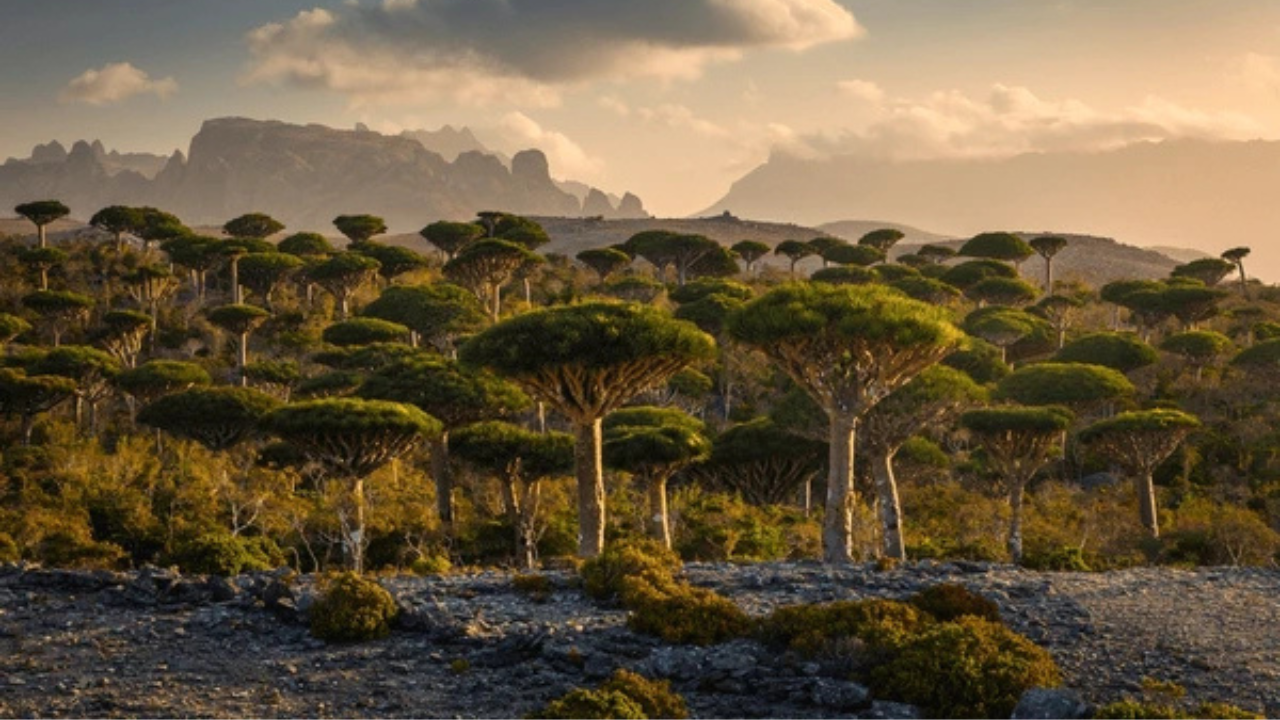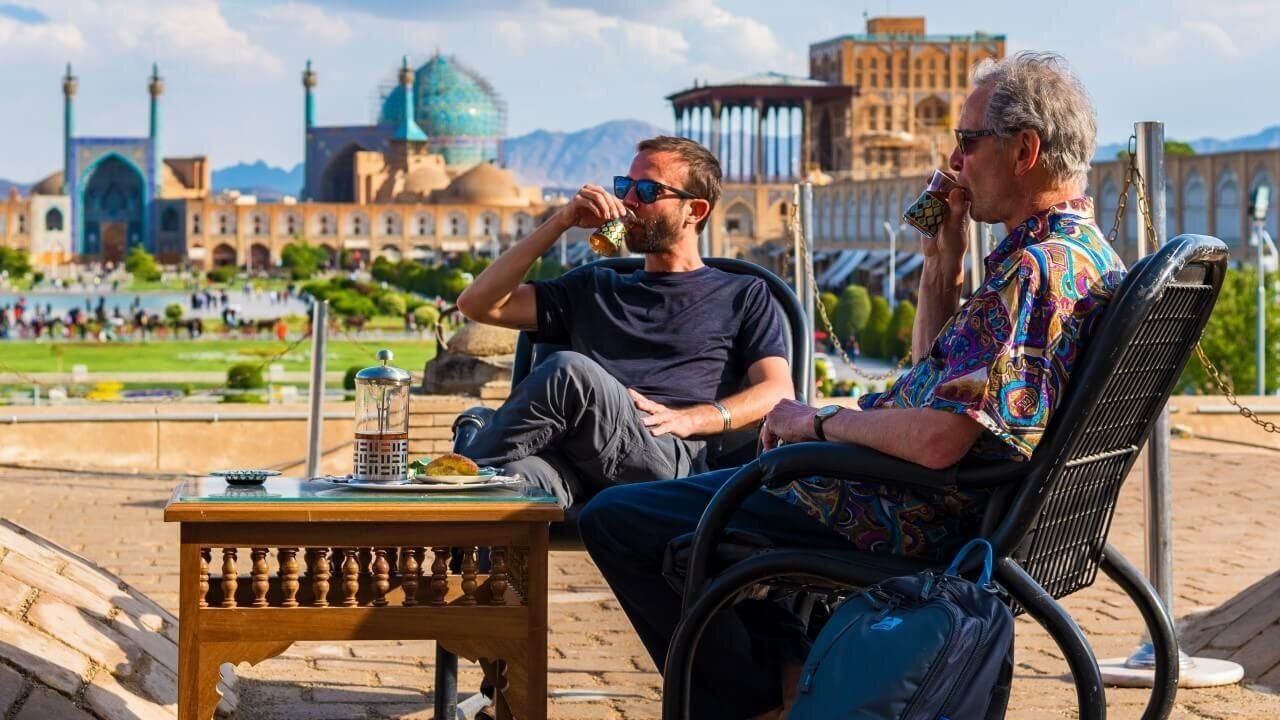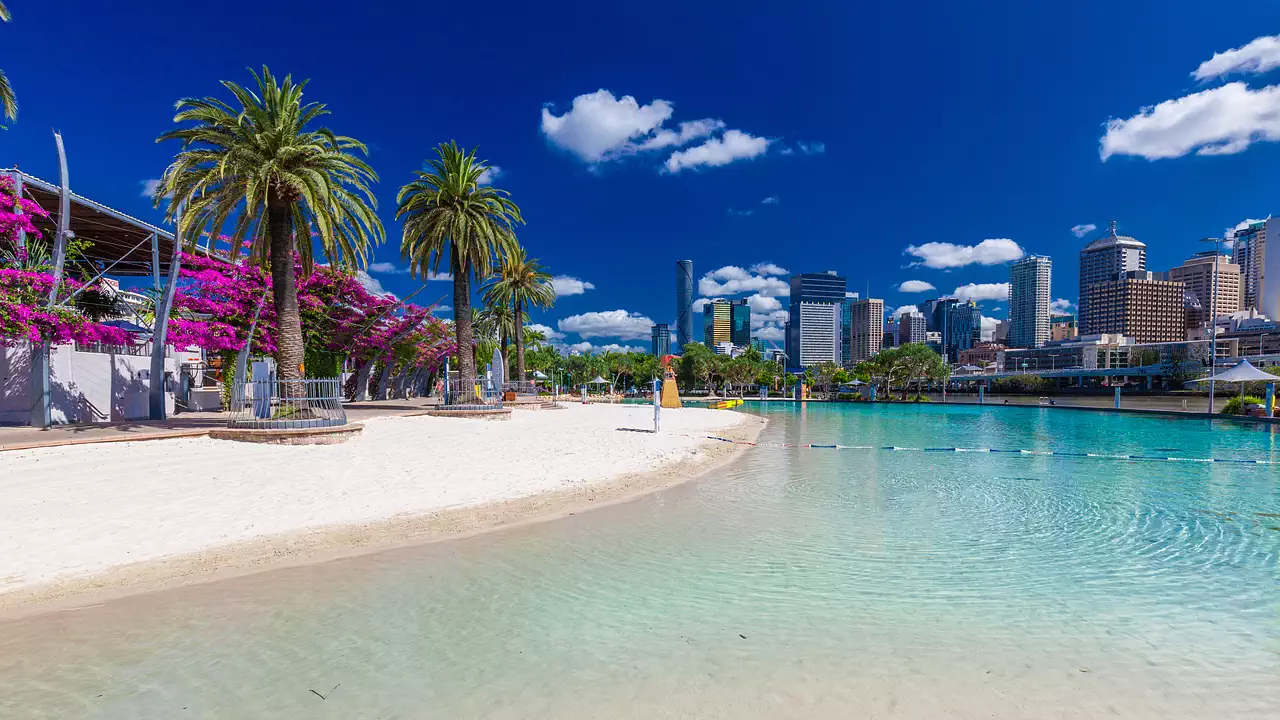Nestled on the remote Socotra Island in Yemen, the Firmihin Dragon Blood Tree Forest stands as one of the most extraordinary and otherworldly natural landscapes on Earth. Known as Roqeb di Firmihin, this limestone plateau hosts the largest and densest population of the endemic Dracaena cinnabari, or Dragon Blood Tree, a species revered for its striking umbrella-shaped canopy and crimson red resin, historically prized as “dragon’s blood.” Spanning approximately 540 hectares, this ancient forest is a UNESCO World Heritage Site and a biodiversity hotspot, harboring rare plants, animals, and a cultural legacy that spans millennia. Despite its beauty, the forest faces significant threats from climate change, overgrazing, and human activity, making its preservation a global priority. In this comprehensive guide, we’ll explore the Firmihin Forest’s unique ecology, cultural significance, conservation challenges, and how to experience this alien-like wonder. Join us on a journey to one of the planet’s most remarkable natural treasures!
The Enigmatic Dragon Blood Tree
The Dragon Blood Tree (Dracaena cinnabari) is the star of the Firmihin Forest, instantly recognizable by its peculiar, mushroom-like silhouette. Growing up to 10 meters tall, these trees develop dense, umbrella-shaped crowns with long, stiff leaves that grow only at the branch tips, shedding every three to four years. This distinctive growth, known as “dracoid habitus,” allows the trees to capture moisture from fog and monsoon rains in Socotra’s arid climate, enabling them to thrive in rocky, high-altitude terrains between 150 and 1,600 meters above sea level.
The tree’s name derives from its deep red sap, historically called “dragon’s blood,” which has been harvested since ancient times for medicinal, cosmetic, and artistic purposes. Romans used it as a dye and medicine, while Socotrans employ it as a breath freshener, pottery glue, and traditional remedy. The resin, extracted by tapping the tree, was a prized commodity in ancient trade routes, valued as highly as frankincense and myrrh. Today, it’s still used in local practices and exported for niche markets.
The Dragon Blood Tree is a relict of the Cenozoic era, with its lineage dating back 20 million years to the Miocene period. Its isolation on Socotra, an archipelago separated from the mainland for millions of years, has led to its unique evolution. Out of Socotra’s 825 plant species, 307 are endemic, and the Firmihin Forest is a prime example of this extraordinary biodiversity, hosting not only Dragon Blood Trees but also rare frankincense trees, desert roses, and endemic invertebrates like the beetle Corticeus socotranus.
The Firmihin Forest: A Geological and Ecological Marvel
Located on a limestone plateau in the central part of Socotra Island, the Firmihin Forest is flanked by deep ravines, creating a natural fortress that has helped protect it from some external pressures, such as overgrazing by goats. Covering 14.9 square kilometers, it is the densest and best-preserved woodland of Dragon Blood Trees, hosting an estimated 35,542 living trees, or over 40% of the species’ global population, despite occupying only 2% of its suitable habitat on the island. This makes Firmihin a critical hotspot for conservation and research.
The plateau’s unique microclimate, influenced by the southwestern monsoon from May to June and September, provides slightly more rainfall than other parts of Socotra, supporting the forest’s ecosystem. The trees’ canopies capture horizontal precipitation, equivalent to 40% of the island’s annual rainfall, creating shaded microhabitats that nurture other rare plants and animals, including 12 endemic reptile species like the critically endangered gecko Hemidactylus dracaenacolus. This ecological role positions the Dragon Blood Tree as an “umbrella species,” whose protection benefits the broader ecosystem.
The forest’s landscape is dramatic, with thousands of Dragon Blood Trees dotting the rocky terrain, interspersed with bottle trees, aloes, and succulents. At golden hour, the scene feels like an alien planet, with the trees’ silhouettes casting eerie shadows against the limestone. Visitors often describe the experience as stepping into a sci-fi movie, a sentiment echoed by photographers like Nick Schmid, who called it “one of the most alien landscapes on our planet.”
Cultural Significance and Traditional Uses
The Dragon Blood Tree is deeply woven into Socotra’s cultural fabric. Locally known as Dam al-Akhawain (Two Brothers’ Blood), the tree’s resin plays a central role in traditional medicine, used to treat ailments ranging from rheumatism to skin conditions. Socotrans also use it as a dye for wool, a varnish, and even a lipstick, reflecting its versatility. The tree’s bark and leaves have practical applications, with the root yielding a gum-resin for toothpaste and the leaves serving as a carminative.
Harvesting is a community-managed practice, primarily controlled by the Dimeroh community of Firmihin, with involvement from neighboring groups like Dierho and Shibehon. Tapping involves making small wounds in the tree’s bark to collect the resin, which hardens into forms like Fosoos (pure resin balls), Shahiz (large slices), or Daqa (small slices). The process requires a recovery period of 2–5 years, with locals reporting an average of 4.5 years between harvests. However, excessive tapping, particularly in accessible areas, has led to tree stress, with 69% of Firmihin’s trees showing wounds.
The forest is also steeped in local lore, with legends attributing the resin’s red hue to the blood of mythical creatures. These stories, combined with the trees’ surreal appearance, enhance the forest’s mystique, drawing adventurous travelers and researchers alike. The Socotra Dragon Blood Tree Association further promotes cultural preservation by translating Socotri poetry, highlighting the island’s intangible heritage.
Conservation Challenges
Despite its ecological and cultural importance, the Firmihin Dragon Blood Tree Forest faces severe threats, earning the Dracaena cinnabari a “Vulnerable” status on the IUCN Red List. The forest’s challenges include:
- Lack of Natural Regeneration: Research shows that most trees in Firmihin are mature or old, with an average age of 300 years and some exceeding 500 years. Few young trees survive due to overgrazing by goats and sheep, which eat seedlings and young shoots. This absence of regeneration threatens the forest’s long-term survival.
- Climate Change: Socotra is experiencing intensified cyclones and prolonged droughts, which uproot trees and reduce moisture availability. A 2021 UAV inventory found a correlation between recent cyclone trajectories and fallen trees, suggesting that climate-driven winds are accelerating the decline of the overmature forest. By 2080, the species could lose up to 45% of its remaining range.
- Overharvesting: While resin harvesting is a traditional practice, excessive tapping weakens trees, particularly in rocky, sun-exposed areas where resin production is higher. This stress reduces tree health, as evidenced by declining crown vitality.
- Human Activity: Infrastructure development and road construction pose risks to the forest’s habitat. Yemen’s ongoing conflict, which has killed over 100,000 people, further complicates conservation efforts by limiting resources and access.
- Fragmentation: The species occupies only 10% of its potential habitat, with Firmihin being the last dense forest. Smaller, fragmented populations elsewhere on the island are less resilient to environmental pressures.
These threats have reduced the Dragon Blood Tree’s density by 44% in the 20th century, raising fears that this may be the species’ last generation. Local residents, like Issa al-Rumaili, lament the loss of once-vast forests, now reduced to scattered trees on barren hills.
Conservation Efforts and Hope for the Future
Despite these challenges, local and international initiatives are working to save the Firmihin Forest:
- Community Nurseries: Since the 1990s, residents like Adeeb Abdullah have established nurseries to grow Dragon Blood Tree saplings, protecting them from grazing. One nursery has produced 600 saplings over 20 years, with plans for a new 300-tree nursery in Firmihin supported by the Socotra Dragon Blood Tree Association.
- UAV Inventories: In 2021, researchers used unmanned aerial vehicles (UAVs) to conduct the first complete inventory of the Firmihin Forest, mapping 35,542 living trees and 2,123 uprooted ones. This high-resolution data (8 cm/pixel) provides critical insights into tree density, mortality, and age structure, guiding conservation strategies.
- Conservation Programs: The Socotra Archipelago’s UNESCO status and inclusion in the Horn of Africa biodiversity hotspot have spurred efforts to expand protected areas like the Skund Nature Sanctuary. International trade of the species is regulated under CITES Appendix II, though enforcement is challenging.
- Reforestation and Grazing Management: Fencing projects, like the pilot exclosure on the Firmihin Plateau, protect seedlings from livestock. Locals are also exploring sustainable grazing practices to reduce pressure on the forest.
- Climate Adaptation: Researchers are studying the trees’ ability to capture horizontal precipitation, which could inform strategies to enhance water availability in cloud forests.
These efforts, combined with community-led management by the Dimeroh and neighboring groups, offer hope. However, experts like conservation biologist Kay Van Damme emphasize that protecting the Dragon Blood Tree is not just about saving a species but preserving Socotra’s identity and ecological balance.
Visiting the Firmihin Dragon Blood Tree Forest
Experiencing the Firmihin Forest is a bucket-list adventure for nature lovers and intrepid travelers. Here’s how to plan your visit:
- Getting There: Socotra is 200 miles off Yemen’s coast in the Arabian Sea. Flights from Abu Dhabi to Hadibu, Socotra’s main town, are available, though Yemen’s conflict may affect schedules. From Hadibu, a 4×4 vehicle or guided trek is needed to reach Firmihin, often via the Dixsam Plateau. The journey can take several hours, with some routes requiring hiking due to rugged terrain damaged by storms. Special permits are required, and October to April offers the best weather.
- What to Expect: The forest is accessible by car in good conditions, but hiking through Wadi Dihur is often necessary. Treks start near villages like Shibakhan and pass bottle trees, date palms, and swimming pools (note: some may have algae). Local Bedouin, like Nur, may offer chai and insights into life in Firmihin. The forest’s rocky outcrops provide stunning views of the tree crowns blanketing the plateau.
- Activities: Guided tours include photography stops, birdwatching, and cultural interactions. Multi-day treks through the Haggier Mountains are available for adventurers. Bring sturdy shoes, sunscreen, and water, as the terrain is rocky and exposed.
- Tips:
- Hire a local guide through reputable operators like Socotra Travel Guide or Bradt Socotra Guidebook for safety and cultural context.
- Respect the forest by avoiding littering or disturbing trees.
- Be prepared for limited infrastructure; accommodations are often basic campsites or guesthouses.
- Check travel advisories due to Yemen’s geopolitical situation.
Why the Firmihin Forest Matters
The Firmihin Dragon Blood Tree Forest is more than a natural wonder; it’s a living relic of Earth’s ancient past and a testament to Socotra’s resilience. Its surreal landscape, rich biodiversity, and cultural significance make it a global treasure, yet its vulnerability underscores the urgent need for conservation. The forest’s role as an umbrella species means that protecting it safeguards countless other endemic plants and animals, preserving Socotra’s status as one of the world’s most biodiverse archipelagos.
For Socotrans, the Dragon Blood Tree is a symbol of identity, tying them to their land and heritage. As resident Hawash warns, “The loss of one dragon blood tree means the loss of tourists, of water, of medication, and—what is worse—the loss of the Soqotri identity.” By supporting conservation efforts, visiting responsibly, or raising awareness, we can help ensure that this ancient forest endures for future generations.
Conclusion
The Firmihin Dragon Blood Tree Forest is a place where time seems to stand still, where ancient trees tell stories of survival, culture, and ecological harmony. Its umbrella-shaped canopies, crimson resin, and alien-like landscape captivate the imagination, while its fragility reminds us of our responsibility to protect the planet’s wonders. Whether you’re a scientist studying its ecology, a traveler seeking adventure, or a dreamer inspired by its beauty, Firmihin offers a profound connection to nature and history. As Socotra faces the challenges of climate change, conflict, and human pressures, the world must rally to save this irreplaceable forest. Plan your visit, support conservation initiatives, and let the Firmihin Dragon Blood Tree Forest inspire you to cherish and protect the wild places that make our world extraordinary.



